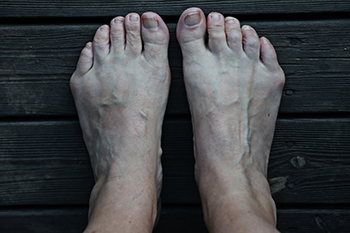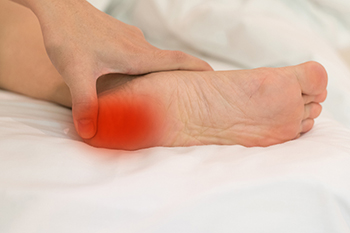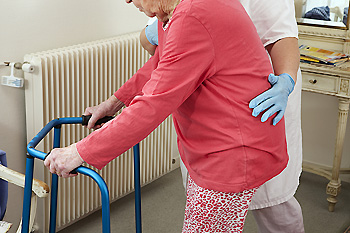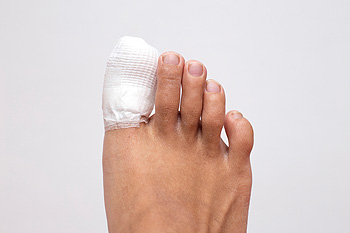
A bunionette is a prominent deformity at the base of the fifth (or little) toe. It can be painful, particularly if it rubs against a tight-fitting shoe. This mini bunion occurs if the bone of the midfoot angles out and the little toe angles in, leading to a bony prominence. The toe might hurt on the outside or inside if that toe rubs against the fourth toe. Wearing wider shoes with space to accommodate the bump, wearing a toe spacer, or padding the bump will help prevent further irritation. Depending on the severity of the bump, it may be necessary to limit walking or standing. Surgery to remove the bunionette or reposition the baby toe are options when these do not work. If you have a bunionette, consult with a podiatrist who can take an X-ray to confirm the problem and provide treatment that is right for you.
If you are suffering from bunions, contact Dean Kim, DPM of Greater Texas Foot & Ankle Specialist. Our doctor can provide the care you need to keep you pain-free and on your feet.
What Is a Bunion?
A bunion is formed of swollen tissue or an enlargement of boney growth, usually located at the base joint of the toe that connects to the foot. The swelling occurs due to the bones in the big toe shifting inward, which impacts the other toes of the foot. This causes the area around the base of the big toe to become inflamed and painful.
Why Do Bunions Form?
Genetics – Susceptibility to bunions are often hereditary
Stress on the feet – Poorly fitted and uncomfortable footwear that places stress on feet, such as heels, can worsen existing bunions
How Are Bunions Diagnosed?
Doctors often perform two tests – blood tests and x-rays – when trying to diagnose bunions, especially in the early stages of development. Blood tests help determine if the foot pain is being caused by something else, such as arthritis, while x-rays provide a clear picture of your bone structure to your doctor.
How Are Bunions Treated?
- Refrain from wearing heels or similar shoes that cause discomfort
- Select wider shoes that can provide more comfort and reduce pain
- Anti-inflammatory and pain management drugs
- Orthotics or foot inserts
- Surgery
If you have any questions, please feel free to contact our office located in Frisco, TX . We offer the newest diagnostic and treatment technologies for all your foot care needs.





